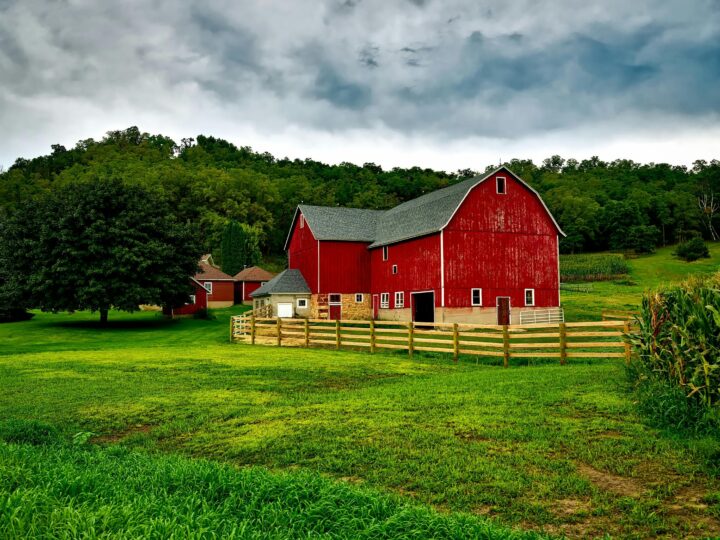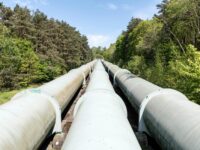The following contribution is from another author.
A barn is more than just a place to store tools, feed, and equipment—it’s the backbone of a well-run farm. But not all barns make life easier. Some are cluttered, poorly ventilated, or too small for growing needs. A badly designed barn can waste time, cause frustration, and damage supplies. A well-planned barn, on the other hand, makes everything accessible, protected, and efficient. Don’t believe it?
Relax! In this article, we’ll examine why a good barn design is important for farm storage and how it can help save time and money in the long run. So, keep reading to the end!
Maximizing Space and Organization
A well-designed barn is more than just a storage space—it’s the key to efficiency and organization on a farm. When everything has a designated place, daily tasks become smoother, saving both time and effort.
A smart layout with wide aisles and strategically placed doors ensures easy movement of equipment and animals. Maximizing vertical space with shelves, hooks, and loft storage keeps the floor clear, creating more room for essential items. Dividing the barn into specific zones for feed, tools, and livestock helps prevent clutter and confusion, making it easier to find what you need when you need it.
Meanwhile, proper lighting and ventilation improve working conditions and help preserve supplies. A well-planned barn makes everything accessible, protected, and easy to manage, leading to a more organized and productive farm.
Protection from the Weather
Farm equipment and supplies are expensive. If you don’t protect them, they can get damaged by harsh weather. A good barn design helps protect your items from rain, snow, and extreme temperatures. A barn with solid roofs, walls, and flooring ensures everything inside stays safe and dry.
One feature that adds extra protection is an overhang. An overhang helps prevent water from running directly onto the barn’s walls and keeps the entrance dry. For example, a small barn with an overhang offers this feature, making it ideal for preventing moisture buildup and extending the life of your stored items. Not only does this protect your equipment, but it also keeps your supplies safe from temperature extremes.
Remember, a barn can also be designed to allow proper airflow, preventing mold and mildew from forming on stored goods.
Easy Access to Your Stored Items
Time is precious on a farm. A well-designed barn ensures that the items you use most often are easy to reach. Instead of wasting time searching for the right tool or feed, a barn with a smart organization helps you get things done faster. This is especially helpful during busy seasons when every minute counts.
A good barn design allows you to keep commonly used items close to the entrance. Items that are needed less frequently can be stored further inside. This simple change can greatly affect how much time you spend retrieving items.
In addition, having organized shelving or storage bins makes it easier to store small items like nails, screws, or tools. This prevents them from getting lost or damaged and makes them easy to grab when needed.
Durability and Long-Term Value
Building a barn is an investment. You want to make sure it lasts for many years. The materials you choose for your barn greatly affect how long it will last. A well-built barn will withstand the wear and tear that comes with daily use on a farm.
Choosing high-quality materials, such as steel or treated wood, can help your barn last longer. So, look for a supplier who provides barns built with durable materials designed to last for years. A barn built to last will save you money on repairs and give you peace of mind knowing that your items are safely stored.
Energy Efficiency
A well-designed barn can also save you money by being energy efficient. For example, barns can be designed with proper insulation to keep the interior warm in the winter and cool in the summer. This reduces the need for heating and cooling systems, which can be costly to run.
In addition, proper airflow prevents the buildup of moisture, which can lead to mold. It also helps keep your stored items in good condition by maintaining an even temperature.
Having an energy-efficient barn is good for both the environment and your wallet. By reducing the amount of energy you use, you can lower your operating costs while also doing your part to reduce energy consumption.
Conclusion
By investing in a barn that is durable and energy-efficient, you are setting your farm up for long-term success. Customizing your barn to fit your specific needs will help you get the most out of your storage space. So, if you’re looking for a solution that helps organize and protect your farm equipment, a well-planned barn is the way to go.

















Absolutely! An energy-efficient barn not only protects your stored items but also saves you money. Keeping a consistent temperature is crucial in preventing moisture buildup. Speaking of engaging activities, when I need a break from barn maintenance, I love playing Papa’s Freezeria. It’s a fun way to cool down and enjoy some creativity! Let’s keep sharing tips to enhance our barns and our leisure time!